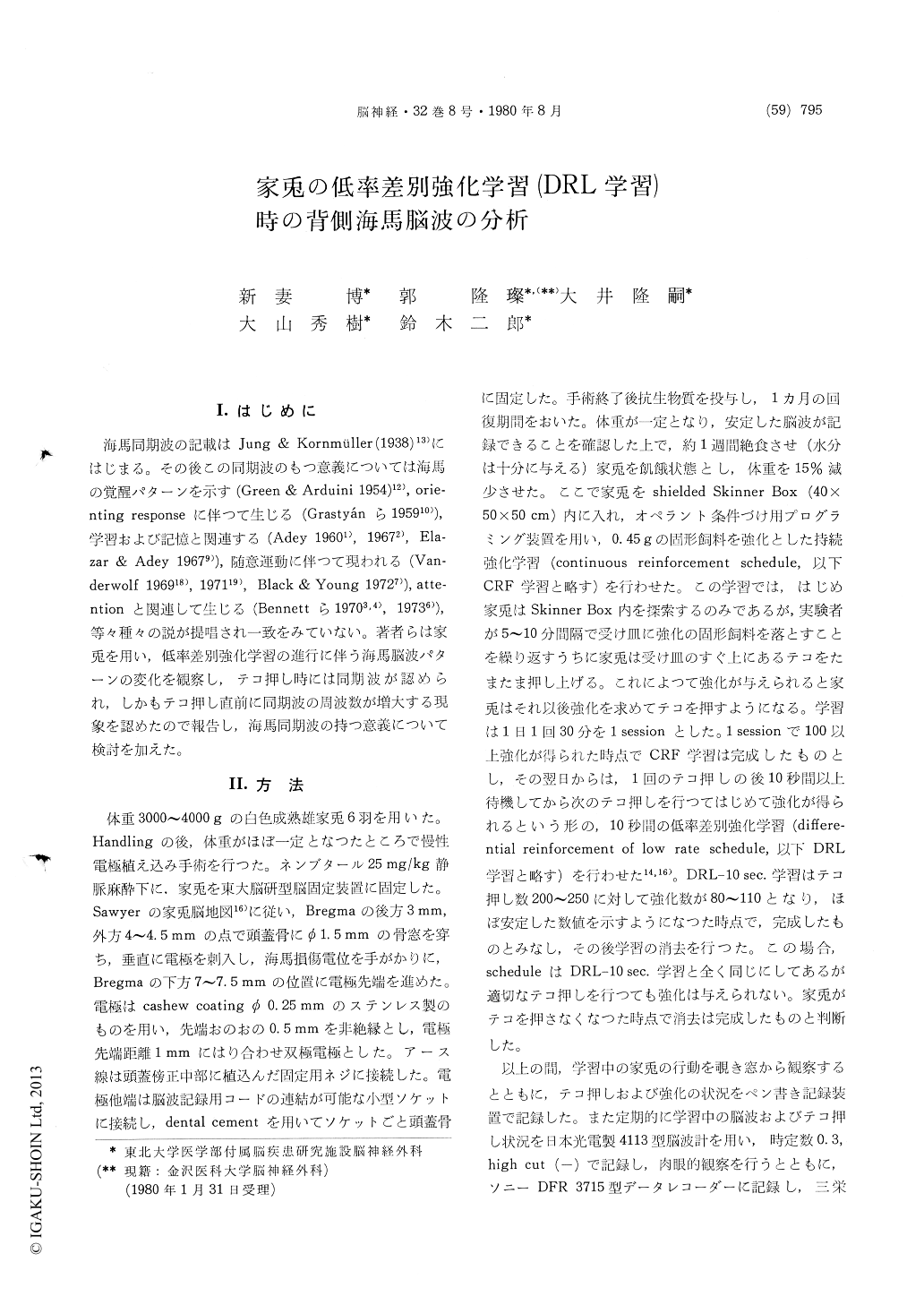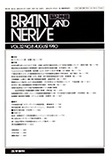Japanese
English
- 有料閲覧
- Abstract 文献概要
- 1ページ目 Look Inside
1.はじめに
海馬同期波の記載はJung & Kornmüller (1938)13)にはじまる。その後この同期波のもつ意義については海馬の覚醒パターンを示す(Green & Arduini 1954)12),orie—nting responseに伴つて生じる(Grastyánら195g10)),学習および記憶と関連する(Adey 19601),19672), Ela—zar&Adey 19679)),随意運動に伴つて現われる(Van—derwolf 196918),197119),Black&Yoong 19727)),atte—ntionと関連して生じる(Bennettら19703,4),19736)),等々種々の説が提唱され一致をみていない。著者らは家兎を用い,低率差別強化学習の進行に伴う海馬脳波パターンの変化を観察し,テコ押し時には同期波が認められ、しかもテコ押し直前に同期波の周波数が増大する現象を認めたので報告し,海馬同期波の持つ意義について検討を加えた。
The change of electrical activity of the dorsal hippocampus during differential reinforcement of low rate (DRL) learning was examined in six rabbits. Bipolar electrodes were implanted stereo-taxically into the dorsal hippocampus (3 mm posterior to bregma, 4-4.5 mm lateral and 7-7.5 mm ventral from bregma). After completion of continuous reinforcement learning, the animals learned DRL on a 10 sec. schedule.
Rhythmic theta waves (6-8 Hz., 0.6-1.5 mV) were predominant in the early sessions of the DRL schedule. With further sessions, regular theta waves decreased and desynchronized waves or slightly irregular theta waves increased especially during the 10 second waiting period. Contrary to the report of Bennett et al., synchronized waves were always seen from 1-2 sec. before lever-press until completion of lever-press. Moreover, these preceding synchronized waves became more pro-nounced and of higher frequencies (8-10 Hz.) as learning proceeded. These high frequency regular waves (α-bursts) were seen in 5.6-35.8% of reinforced lever-press in the 10th session, and 79.5-93.8% in the 60th session. Alpha bursts were sometimes seen after 8-9 sec. waiting in later sessions, but never seen within five sees.. During the extinction of DRL learning, the occurrence rate of α-bursts on adequate but non-rewarded lever-pressing decreased. The initiation of move-ment was not necessarily associated with the frequency increase. These results cannot be ex-plained satisfactorily in terms of an association be-tween synchronized waves and voluntary movement. Frequency increase was seen when rabbits expected reinforcement after waiting for about 10 sec. or more. These results indicate that frequency in-crease of hippocampal synchronized waves is seen in association with higher central processing, most likely with memory.

Copyright © 1980, Igaku-Shoin Ltd. All rights reserved.


